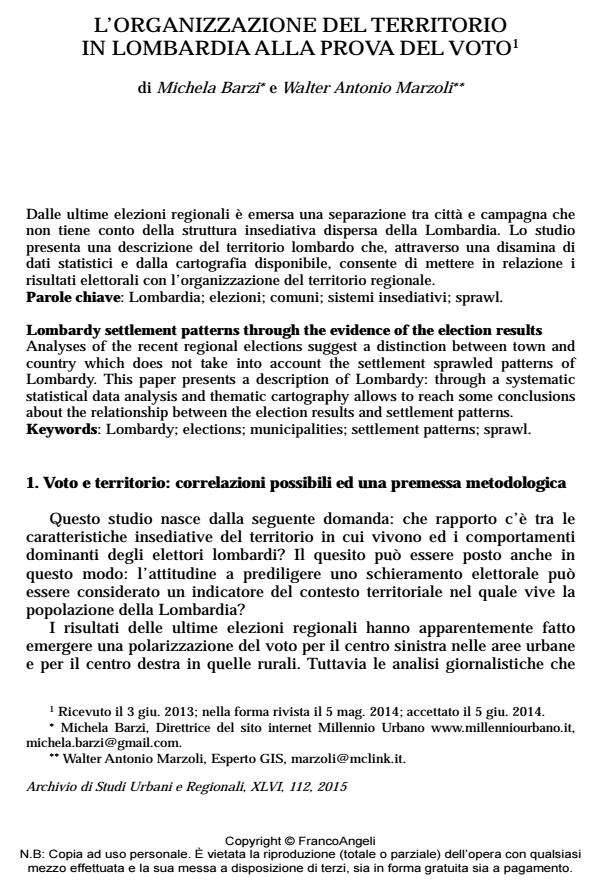Lombardy settlement patterns through the evidence of the election results
Journal title ARCHIVIO DI STUDI URBANI E REGIONALI
Author/s Michela Barzi, Walter Antonio Marzoli
Publishing Year 2015 Issue 2015/112
Language Italian Pages 26 P. 34-59 File size 295 KB
DOI 10.3280/ASUR2015-112003
DOI is like a bar code for intellectual property: to have more infomation
click here
Below, you can see the article first page
If you want to buy this article in PDF format, you can do it, following the instructions to buy download credits

FrancoAngeli is member of Publishers International Linking Association, Inc (PILA), a not-for-profit association which run the CrossRef service enabling links to and from online scholarly content.
Analyses of the recent regional elections suggest a distinction between town and country which does not take into account the settlement sprawled patterns of Lombardy. This paper presents a description of Lombardy: through a systematic statistical data analysis and thematic cartography allows to reach some conclusions about the relationship between the election results and settlement patterns.
Keywords: Lombardy; elections; municipalities; settlement patterns; sprawl
Michela Barzi, Walter Antonio Marzoli, L’organizzazione del territorio in Lombardia alla prova del voto in "ARCHIVIO DI STUDI URBANI E REGIONALI" 112/2015, pp 34-59, DOI: 10.3280/ASUR2015-112003